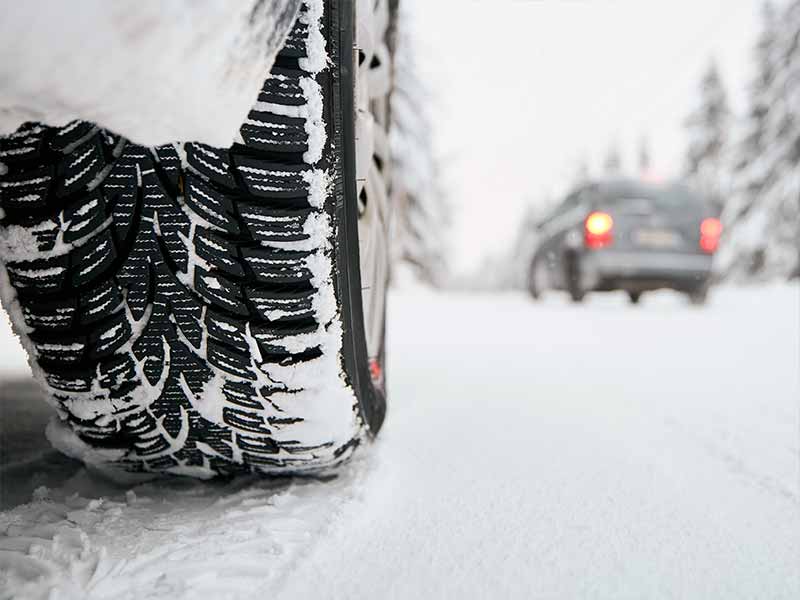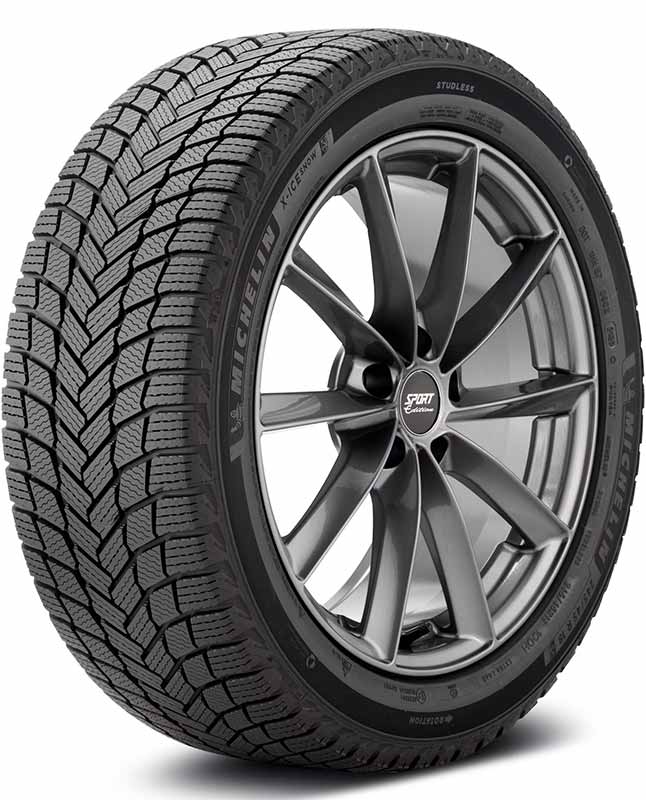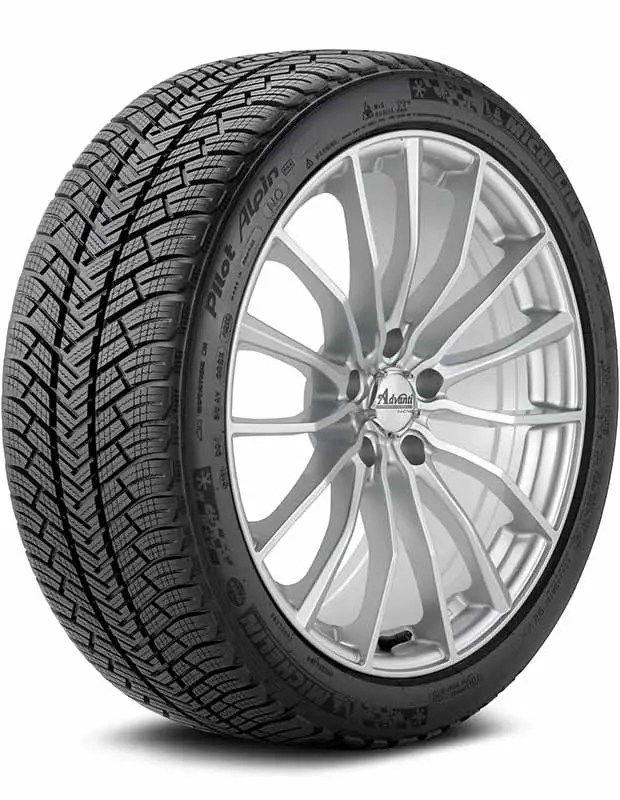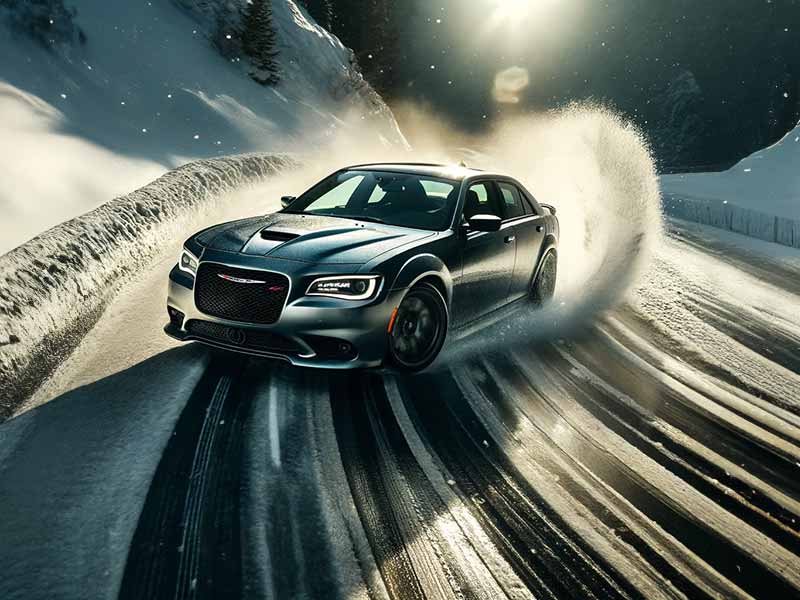As winter looms, the roads become more treacherous, demanding more from both drivers and their vehicles. You’re not just a driver; you’re a pilot navigating through the icy gauntlets of the season.
Studless Ice And Snow Vs Performance Winter Tires
Studless ice & snow tires offer superior traction in severe winter conditions without metal studs, ideal for deep snow and ice.
Performance winter tires provide enhanced handling and stability, perfect for cold, dry roads and drivers who prioritize performance.
In this article, we’ll dive deep into the differences between studless ice & snow tires and performance winter tires, covering everything from traction, handling, and durability to cost, comfort, and suitability for various winter scenarios.
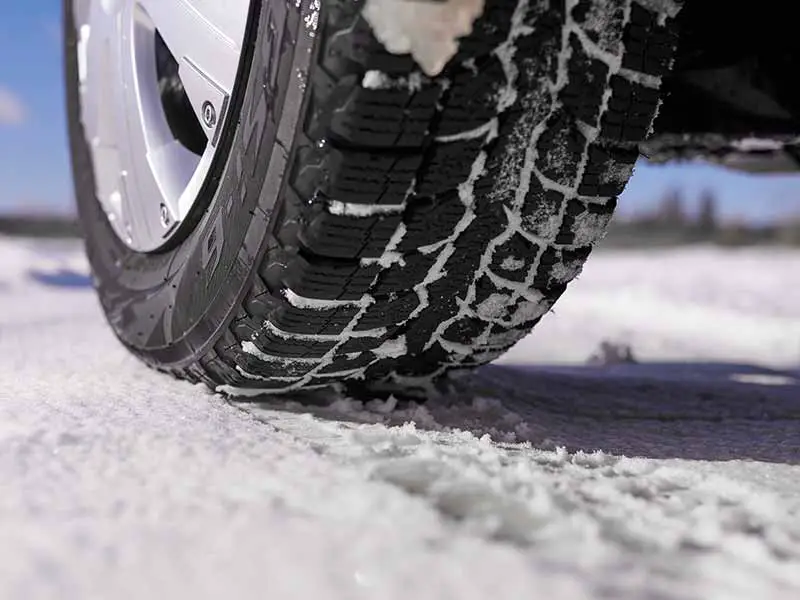
What Are Studless Ice & Snow Tires?
Studless Ice & Snow tires are engineered to provide maximum safety and traction in the harshest winter conditions, including deep snow, slush, and ice. They are designed to offer superior grip and stability when temperatures drop significantly, distinguishing themselves from Performance Winter tires, which are aimed at balancing cold-weather performance with handling. Here’s how Studless Ice & Snow tires stand out:
- Optimized Rubber Compounds: These tires are made with a rubber compound that remains flexible even at extremely low temperatures, ensuring the tire maintains contact and grip with the road. This compound is typically softer than that of Performance Winter tires, enabling it to conform better to icy surfaces and compact snow, providing superior traction.
- Aggressive Tread Patterns: Studless Ice & Snow tires feature deep treads with unique patterns that are designed to dig into snow and expel slush and water. The biting edges and sipes are optimized for ice and deep snow, significantly differing from the more moderate tread designs of Performance Winter tires, which are engineered for a balance between snow traction and dry road handling.
- Focus on Traction in Severe Conditions: While both tire types are designed for winter, Studless Ice & Snow tires are specifically tailored for the most extreme conditions. They excel in deep snow and ice, providing reliable and consistent performance in scenarios where other tires might falter. Performance Winter tires, while effective in cold weather, prioritize handling and may not offer the same level of deep snow and ice performance.
- Temperature Performance Range: Studless Ice & Snow tires are designed to perform best in consistently low temperatures and severe winter conditions. Their performance advantage becomes most apparent as the temperature drops and the winter conditions become more extreme. In contrast, Performance Winter tires are built to handle a wider range of cold conditions, including cold, dry pavement where they can maintain better handling and speed capabilities.
Michelin X-Ice Snow
Customer Rating
Overall Rating
8.8 of 10
Wet Weather
8.6 of 10
Winter Weather
9.0 of 10
Tread Wear
8.8 of 10
Dry Weather
8.8 of 10
Ride Comfort
8.7 of 10
UTQG
Uniform Tire Quality Grade
UTQG Treadwear Rating: N/A
UTQG Traction Rating: N/A
UTQG Temperature Rating: N/A
Mileage Warranty
None
Find The Best Price
Key Performance Metrics
Hydroplaning: 9.1 of 10
Wet Grip: 9.1 of 10
Cornering: 8.5 of 10
Dry Grip: 8.8 of 10
Responsiveness: 8.6 of 10
Mild Snow Grip: 9.3
Heavy Snow Grip: 9.0
Ice Grip: 8.7
Comfort Level: 9.0 of 10
Road Noise: 8.5 of 10
Benefits of Studless Ice & Snow Tires
Let’s break down the advantages that make these tires a popular choice for those looking to navigate winter’s wrath safely and confidently.
Enhanced Traction on Ice and Snow
The primary goal of any winter tire is to keep you moving safely, and studless ice & snow tires excel in this area:
- Ice Traction: Thanks to advanced tread designs and rubber compounds, these tires cling to icy surfaces, reducing slipping and sliding.
- Deep Snow Navigation: The deep treads and unique patterns push snow away from the tire, maintaining contact with the road even in deep, fluffy snow.
Quiet and Comfortable Ride
One of the most appreciated benefits of studless tires is the quiet and smooth ride they offer:
- No Metal Studs: Without the clatter of metal studs, studless tires provide a noticeably quieter ride, reducing road noise and enhancing driver comfort.
- Smooth Handling: These tires are designed to absorb road irregularities, delivering a more comfortable ride compared to the often harsher ride quality of studded tires.
Durability and Longevity
Investing in a set of tires means looking at how they’ll perform over time. Here’s how studless ice & snow tires stack up:
- Tread Life: Modern studless tires are designed to last, with tread compounds that resist the rapid wear associated with cold conditions.
- Seasonal Use: When used only in the appropriate season, these tires can last through multiple winters, making them a cost-effective option over time.
Safety for You and the Road
Safety is a paramount concern, and these tires are designed with both the driver and the road in mind:
- Improved Braking: In emergency braking scenarios, the superior grip of studless ice & snow tires can make a significant difference in stopping distances.
- Road Preservation: Unlike studded tires, which can dig into and wear down road surfaces, studless tires are much gentler on the pavement, contributing to longer-lasting roadways and reduced maintenance costs.
When to Choose Studless Ice & Snow Tires
Understanding the benefits is just part of the equation. Knowing when to choose these tires can help ensure you’re getting the most out of your investment:
- Consistent Winter Conditions: If you live in an area with prolonged periods of snow and ice, these tires are an ideal choice for maximum safety and performance.
- Temperature Shifts: Even if snow isn’t a constant, the temperature-specific design of these tires means they’ll provide superior performance in cold weather.
Explore the importance of winter tires even if snow isn’t a constant in your region at Are Winter Tires Worth It.
Limitations of Studless Ice & Snow Tires
Here’s what you need to know about the potential drawbacks of these tires.
Reduced Performance in Non-Winter Conditions
Studless ice & snow tires are optimized for cold weather and slippery surfaces, which can lead to some trade-offs:
- Wet and Dry Road Performance: In temperatures above freezing, these tires may not provide the same level of grip and responsiveness as all-season or performance tires.
- Softer Rubber Compound: The softer rubber that provides excellent traction in cold weather can wear down more quickly in warmer temperatures, leading to reduced tread life if used year-round.
Temperature Sensitivity
The very features that make studless ice & snow tires excellent in winter can become a limitation as conditions change:
- Optimal Temperature Range: These tires are designed to perform best in cold weather. As the thermometer rises, their performance can diminish.
- Seasonal Changeover: To avoid premature wear and maintain optimal performance, it’s typically necessary to change these tires out for summer or all-season tires once the weather warms up.
Considerations Before Choosing Studless Ice & Snow Tires
- Climate and Weather Patterns: If you live in an area with mild winters or infrequent snow, the benefits of these tires might not outweigh the drawbacks.
- Driving Style and Needs: Consider how often you encounter severe winter conditions and whether you’re willing to switch tires seasonally.
Michelin Pilot Alpin PA4
Customer Rating
Overall Rating
8.8 of 10
Wet Weather
9.1 of 10
Winter Weather
8.6 of 10
Tread Wear
9.0 of 10
Dry Weather
8.9 of 10
Ride Comfort
8.9 of 10
UTQG
Uniform Tire Quality Grade
UTQG Treadwear Rating: N/A
UTQG Traction Rating: N/A
UTQG Temperature Rating: N/A
Mileage Warranty
None
Find The Best Price
Key Performance Metrics
Hydroplaning: 9.1 of 10
Wet Grip: 9.2 of 10
Cornering: 8.9 of 10
Dry Grip: 9.1 of 10
Responsiveness: 8.8 of 10
Mild Snow Grip: 9.3
Heavy Snow Grip: 8.3
Ice Grip: 8.2
Comfort Level: 9.2 of 10
Road Noise: 8.7 of 10
What Are Performance Winter Tires?
Performance Winter tires are designed for drivers looking to maintain higher levels of handling and performance during cold winter months while still ensuring adequate safety on snow and ice. These tires are a popular choice for those who experience cold, but less severe winter conditions and still want to enjoy an engaging driving experience. Here’s how Performance Winter tires differentiate themselves from Studless Ice & Snow tires:
- Balanced Rubber Compounds: Performance Winter tires use rubber compounds that are flexible enough to perform in cold temperatures but are typically harder than those used in Studless Ice & Snow tires. This balance allows for better handling and stability on cold, dry roads, while still providing adequate traction on snow and ice.
- Moderate Tread Patterns: The tread design of Performance Winter tires is less aggressive than that of Studless Ice & Snow tires. They feature enough siping and tread depth to manage light snow and slush but focus more on maintaining road contact and stability at higher speeds. This makes them well-suited for cold, but clear roads, or regions where winter conditions are not as extreme.
- Emphasis on Handling and Speed: Performance Winter tires are the preferred choice for drivers who don’t want to sacrifice driving enjoyment during winter months. They offer better high-speed stability, cornering, and overall handling than Studless Ice & Snow tires, making them ideal for performance vehicles or those who desire a more responsive driving experience.
- Versatility in Cold Conditions: While they are still winter tires designed to handle cold temperatures, Performance Winter tires are more versatile across a range of cold weather conditions. They perform well on cold dry roads, wet roads, and in light snow, providing a well-rounded winter driving experience for areas where severe snow and ice are less common.

Benefits of Performance Winter Tires
Performance winter tires are the unsung heroes for drivers who demand more from their vehicles during the cold months. Designed to deliver a superior driving experience without compromising on safety, these tires offer a suite of advantages for the discerning motorist. Let’s explore the benefits that make performance winter tires a worthy investment for those who live in colder climates but still crave performance.
Enhanced Handling and Stability
Performance winter tires shine when it comes to maintaining control and stability in cold conditions:
- Superior Handling: Engineered for responsiveness, these tires allow for more precise steering and handling, giving drivers confidence on winter roads.
- Stability at Speed: They are designed to maintain performance at higher speeds, making them suitable for drivers with a spirited driving style, even in colder temperatures.
Versatile Traction Performance
While they might not outperform studless options on ice, performance winter tires offer a balanced approach to traction:
- Snowy Roads: They provide dependable traction in light to moderate snow, allowing for safer travel in winter weather conditions.
- Wet and Dry Grip: Specialized tread compounds and patterns mean these tires perform well in a range of winter conditions, including wet and dry cold roads.
Braking and Cornering Capabilities
A critical aspect of driving safety is the ability to stop and maneuver effectively, and this is where performance winter tires excel:
- Improved Braking: In cold conditions, the flexible rubber compounds allow for better road grip, reducing stopping distances.
- Enhanced Cornering: The design of these tires allows for better edge grip during turns, providing a more stable and controlled cornering experience in cold weather.
Longevity and Durability
Investing in a set of tires means considering their lifespan and performance over time:
- Durable Construction: Performance winter tires are built to withstand winter conditions while providing lasting performance.
- Seasonal Use Longevity: When used appropriately during the colder months and stored properly off-season, these tires can serve well for multiple winters.
When to Opt for Performance Winter Tires
Choosing performance winter tires depends on a few key factors:
- Driving Conditions and Climate: They are ideal for areas with cold, dry winters or moderate snowfall, where the performance aspect is as important as winter safety.
- Driving Style and Vehicle Type: If you drive a performance-oriented vehicle or simply value responsiveness and handling, these tires might be the perfect winter companion for your car.
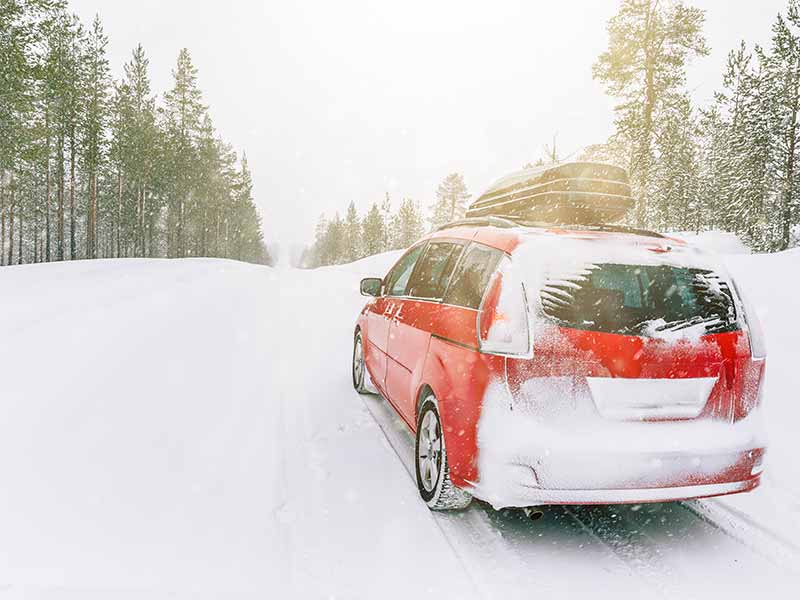
Limitations of Performance Winter Tires
While performance winter tires offer a compelling blend of cold-weather capabilities and high-speed stability, they aren’t without their limitations. Understanding these drawbacks is essential for drivers considering performance winter tires for their vehicles. Let’s explore some of the areas where these tires may fall short and what you should consider before making your choice.
Reduced Deep Snow and Ice Traction
Performance winter tires are designed for balance, which means some compromises in extreme conditions:
- Deep Snow Capability: They typically don’t provide the same level of deep snow traction as studless ice & snow tires, making them less suitable for areas with heavy snowfall.
- Ice Grip: Without the aggressive tread patterns and softer compounds found in studless ice & snow tires, performance winter tires may not offer the same level of ice traction, especially in severe ice conditions.
Wear in Warmer Temperatures
Just like their studless counterparts, performance winter tires are optimized for cold weather and may wear faster under certain conditions:
- Temperature Sensitivity: The rubber compounds in performance winter tires are designed to stay flexible in cold temperatures. In warmer conditions, this can lead to faster wear and reduced longevity.
- Seasonal Changeover Requirement: To prevent premature wear, it’s usually necessary to switch to summer or all-season tires once the weather warms up, requiring an additional set of tires and the associated changeover costs.
Performance Trade-offs
Choosing a tire always involves balancing various performance aspects based on your needs:
- Handling vs. Traction: While performance winter tires offer better handling and high-speed stability, this comes at the cost of some traction in the most severe winter conditions.
- Cost vs. Benefit: Performance winter tires can be more expensive than standard winter tires, and for drivers in extreme winter environments, the additional cost may not provide proportional benefits.
Considerations Before Choosing Performance Winter Tires
Understanding these limitations is crucial in determining whether performance winter tires are the right choice for your winter driving needs:
- Evaluate Your Winter Driving Conditions: Consider the typical winter weather in your area. If you frequently encounter deep snow or severe ice, a studless ice & snow tire might be more appropriate.
- Consider Your Driving Style: Reflect on what’s more important to you: the enhanced handling and performance of these tires or the maximum traction in winter conditions offered by other types of winter tires.
- Plan for Tire Changeovers: Remember that these tires are best used in cold weather conditions and plan for the possibility of changing tires as the seasons change to maintain optimal performance and tire longevity.
Resources
Below are some links you may find helpful when learning about tires
- Performance winter tires or studless ice and snow tires? – Modern Tire Dealer
- What are the tire performance categories for winter / snow tires? – Tire Rack
Final Thoughts
Whether you opt for the unbeatable snow and ice performance of studless tires or the enhanced handling of performance winter tires, the key is understanding your specific needs and driving conditions.
No tire can outperform all conditions, so consider what winter throws your way and choose accordingly. With the right knowledge and the right tires, you’ll be prepared to face the winter roads with confidence.
Good luck and happy motoring.
